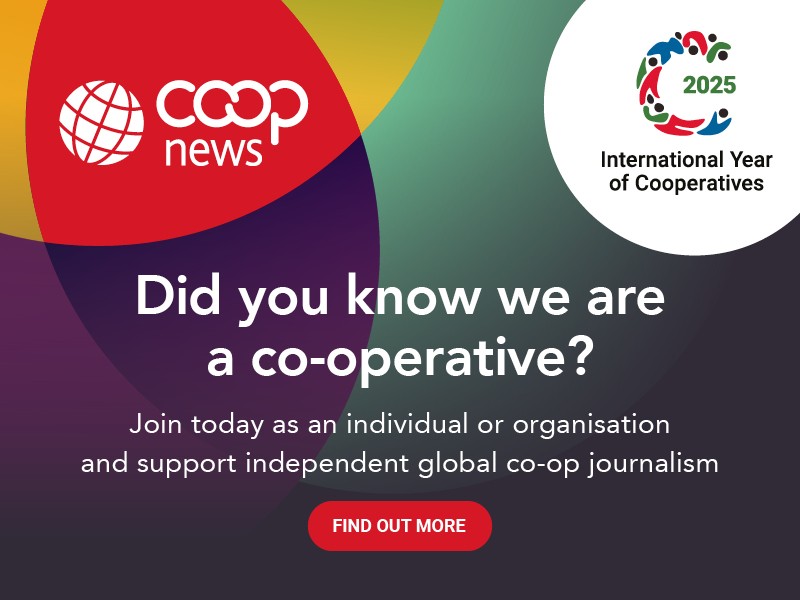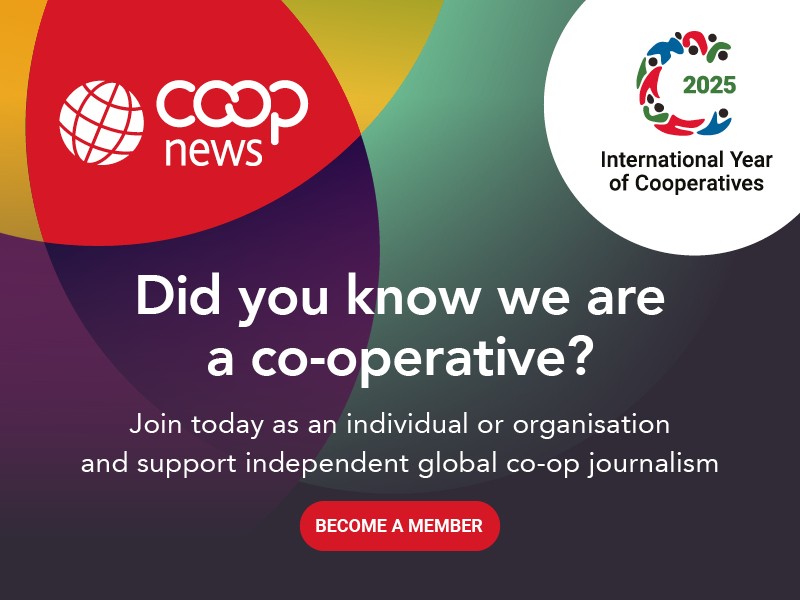Montreal-based Radish Cooperative’s founders saw a food delivery market dominated by large digital platforms. Together they formed a co-operative that put local restaurants, couriers, and customers first.
Tell us about the Radish Cooperative.
We initially started as a food delivery co-operative. We started working on it in 2019, and then we officially launched during the pandemic. The goal was to challenge the Deliveroos and the Ubers of the world. And since then, we’ve grown and diversified quite a bit. Today we have almost 30 employee members, and we have 160 merchant members. And consumer members can also be part of the co-op.
What led you to setting it up?
I’ve been in the restaurant sector my whole life and I think the sector is the last frontier for technology adoption. We’ve seen a bit more since the pandemic, but for the last several decades, it was quite behind. And in North America it tends to attract a lot of people who come from underprivileged backgrounds. So that might be immigrants, it might be people who don’t have a high level of education, or maybe they went to a Culinary Institute, but they don’t have accounting or other backgrounds.
And what happened is that large players came into the fray and imposed their models. Big companies were able to onboard everyone to their platforms, which was a good thing when they started, but over time, the effects had a very negative impact on the industry.

Because the thing is, food delivery has existed for hundreds of years. And prior to the big platforms, our restaurants were doing 100-120 deliveries a day, with a dozen drivers, all of them salaried. The restaurant was making money, there was no delivery fee to the client and the deliveries were under 30 minutes. And somehow, the platforms came in and fees went up, drivers got paid less, restaurants made less, customers got their food later and in worse conditions, and even the likes of Uber is not making money. And that was just really ironic, right? Because in theory, the whole point of technology is to make things more efficient, and here it had done the total opposite. And the reason for that is because the value that they needed to extract from the industry to pay off the VC money was just enormous.
Related: Catalan food delivery co-op raises funds to launch app
And so we were like, okay, we want to do something about this, but we can’t just go at it with the same model, but with a lower fee. That’s not a long term sustainable model.
I’d been working at a co-op at that time, Desjardins, which is a large financial credit union. And my office was next to the lobby where they used to host presentations about the history of the organisation. Having listened to the story of the founding couple all morning and all afternoon for a year, I think I drank the Kool Aid, and was like, ‘hey, this is actually really interesting!’.
The founders went to Ontario, and they were able to open 11 credit unions in a span of 29 days on horseback. The guy had a safe on a horse, and was riding from town to town, opening credit unions. We have this notion of co-ops being an antiquated model, or not keeping up with the times. But here you have an example of a co-op that’s faster than any start-up I’ve seen in the modern era. This is before the internet, before tech. The guy was literally on a horse! And so to me, that was a sign that maybe we could apply this model to the restaurant sector, and just because it’s a co-op, it doesn’t mean it has to be slow. It can be competitive.
Was working at Desjardins your first encounter with co-ops?
That was my first direct experience. When I started working at Desjardins, I didn’t even know what a co-op was, I just needed a job. But my dad was familiar with the co-op model. He immigrated to Montreal in the 80s, and he told me a story of when he had kidney failure. Now he’s better, but at some point he got very sick. And, I was young at that time, maybe, like, 14, and we had to start closing our businesses and rearranging our affairs. He had a lot of loans, including with Desjardins – and that was the only institution that treated him like a human and actually understood the situation. His experience was that co-ops are radically different.
What have been the main challenges?
The biggest challenge is just that we’re so different in terms of our structure. We’re a co-op, though not in the way people think, and we’re also a startup. And so we’re in two different worlds that we’re trying to bridge together. What’s very unique about our model is that, as far as I know, we’re the only co-op in the world that can take equity investment that can change in value, but it wouldn’t give investors the governance rights. So they wouldn’t be able to vote and control the co-op. Which is, I think, the key distinction. And so there’s a lot of work we have to do to teach investors and co-operators and the tech guys what we’re trying to do. We still have to be economically competitive. And I think that’s been our biggest challenge. We’ve made a lot of headway. There’s still a way to go but I think the fact that we’re still alive three, four years in, is a testament to what we’re doing. I don’t know if we’ll succeed in the long term, but I’m optimistic, obviously.
And the highlights?
The highlights are just all the random moments in the adventure, like the impacts we’ve had on people’s lives, or just times we’ve come in to help a restaurant that was really down on its luck and needed help with some type of delivery or with staffing. Or like this morning, a member of staff was telling me how they were doing a delivery, and they were blocked by a garbage truck, and they got out and helped the garbage truck driver. And I thought that was really neat. With another platform, it’d be a lot harder to do that because of how much pressure you’re under. It’s all the small things.
What’s next for Radish?
I think we’re almost on the cusp of being stable. That’s always been the biggest priority. When we started, we had no salaries, we had no resources and no equipment, we had no clients, we had no platform. Now we have most of that. And in theory, other people can come and take the model and replicate it, within the same region or beyond. And I think that’s going to increase our impact.
Also, a big push we’re making is allowing the membership to be involved directly through our app. Because often, a lot of co-ops have challenges with member involvement. You have one general assembly, and everyone shows up, and that’s that. We want people to be involved through the app, vote through the app, and buy shares through the app. And I think that’s going to push us to a whole new level.

